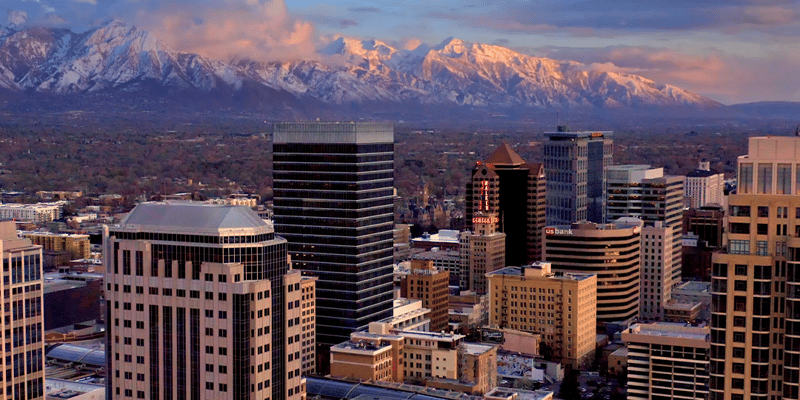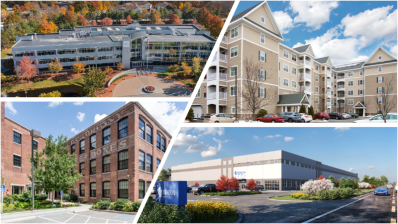It’s no secret that Austin, TX is one of the nation’s hottest markets, but you might be surprised to hear that Salt Lake City isn’t far behind. This emerging market ranked #4 nationwide on our annual Best Places to Invest Report, just two behind #2 ranked Austin. Salt Lake City also ranked in the top ten for three other asset classes in our report:
#4 for Office
#4 for Multifamily Acquisition
#6 for Multifamily Development
We’re keeping an eye on this maturing and increasingly institutional metro and here’s why.
1. Rapid population growth and limited vacancy is fueling demand for multifamily development.
Salt Lake City ranked #6 for Multifamily Development in our 2021 Best Places to Invest report.
Recently ranked #23 out of the 150 best cities to live in the U.S. by U.S. News, there are several reasons for Salt Lake City’s perennial population growth.
Affordability: With the average apartment rent nearly $180 less than the national average, Salt Lake City is still one of the nation’s most affordable metros, despite a nearly 10% rent growth since June of 2020.
Job Market: SLC was recently ranked the #2 Surge City in the nation by Inc. Magazine, right behind Austin, and took the #1 spot on Money Geek’s 2021 Top U.S. Cities for Job Seekers report. This metro has become not just a tech hub, with the area notably adopting the moniker Silicon Slopes, but a haven for entrepreneurs and start-up culture, as well. In 2016, The University of Utah opened Lassonde Studios, a 160,000 square-foot building where student entrepreneurs can live and work as they develop new companies.
Last year, SLC outpaced all other major U.S. markets in the growth of the 20 to 34-year-old population. Despite the recent record supply growth of multifamily properties to meet rental demand, vacancies continue to be tight with an astounding 169% increase in net absorption over the last year.
2. Salt Lake City is one of the fastest recovering areas of the nation post- COVID-19.
Salt Lake City ranked #4 for Office in our 2021 Best Places to Invest report.
After recovering all jobs lost during the pandemic by February of ‘21, Salt Lake City’s unemployment rate was the 2nd lowest in the country by August at just 2.6%. As companies begin to welcome their employees back to the office, either full-time or with a hybrid model, a labor shortage (the 5th largest in the nation) is making for a competitive hiring market. With 1.45 jobs available for each individual looking for work, employers may be searching for unique ways to retain and attract top talent. This could set the stage for value-add deals in the office sector, as employers look to building improvements, such as the addition of amenities or modernization, to gain a competitive edge in hiring.
3. Salt Lake City is one of the top 10 tech markets in the nation.
Over the last ten years, SLC’s job growth in both the life sciences and tech sectors has nearly doubled the national average–9.1% compared to 5.3%. Top tech tenants, including Weave, L3 Technologies, and Domo, are relocating to or expanding operations in Salt Lake City. Most notably, Adobe recently doubled the size of its operation and local workforce in Salt Lake City. These corporate expansions and relocation are being driven by both relatively affordable office space and Salt Lake City’s robust tech-educated millennial population.
4. Multifamily rents are projected to increase at the fastest year-end pace on record.
Salt Lake City ranked #4 for Multifamily Acquisition in our 2021 Best Places to Invest report.
With a rental vacancy rate of 5.5% (versus 6.5% nationally) and the highest rent growth in 20 years as of June 2021, multifamily properties in SLC have retained value even as we saw many renters leaving urban areas due to COVID induced migration. According to Marcus & Millichap’s Q3 2021 Multifamily Market Report, the vacancy rate is forecasted to decline to 2.9%, the lowest year-end vacancy recorded in SLC over the last 20 years.
What this means for investors:
It’s a classic supply-demand situation in Salt Lake City.
With more renters than available units, it’s reasonable to assume that rents will continue to grow year-over-year, increasing overall net operating income (NOI) and possibly delivering strong returns to investors. New multifamily developments will likely lease up quickly once they hit the market, especially as young and more affluent white-collar workers move to the area, drawn by a strong job market, a more affordable cost of living, and easy access to prime wilderness and year-round outdoor activities.


